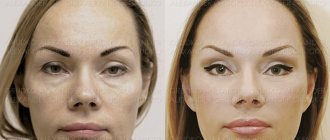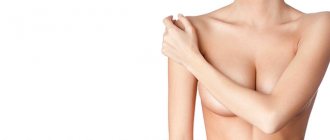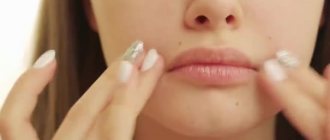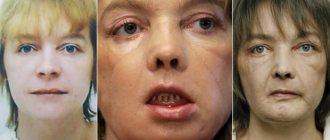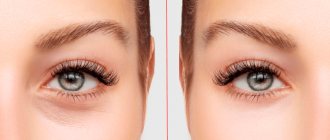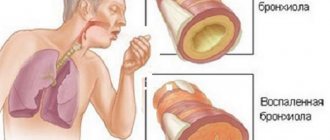It took plastic surgery about ten years to grow from conservative interventions into minimally invasive “plastic surgery” with ultra-modern equipment and technologies, which just yesterday were something little commensurate with reality. Compared to today’s level, even at the dawn of the 2000s, plastic surgeries were carried out “cavemanlike” and conservatively, and deciding on rejuvenation really meant “going under the knife.” Now in this area, as in all surgery, everything has changed: from classical traumatic techniques with their deep incisions and unpredictable results, “plastic” has irrevocably moved into the era of new technologies, which today involve low-traumatic and “non-surgical” interventions, and are carried out they “in a couple of punctures” and under local anesthesia.
Moreover, the boundaries of the possibilities of plastic surgery have noticeably expanded: if only yesterday the arsenal of anti-aging techniques included only a circular coronary lift, now, before recommending it to a patient, the surgeon will three times offer some less traumatic solution, regardless of the age and degree of deformation of the patient’s face .
Contraindications
The likelihood of complications increases greatly if a patient undergoes surgery who, for medical reasons, should not undergo surgery. To exclude such a situation, before correction, mandatory tests and examinations are prescribed, which include general tests and biochemistry, coagulography, electrocardiography, fluorography, and more. The patient must also obtain a physician’s report with permission to undergo surgery. Contraindications for correction:
- bleeding disorder,
- decompensated diabetes mellitus,
- infectious and inflammatory diseases,
- chronic disease in the acute phase,
- diseases of the cardiovascular system,
- oncological diseases.
Pregnant and lactating women will also have to refrain from surgery; it is better to schedule a visit to the surgeon for a time after the end of lactation. Facial plastic surgery is not performed on patients under 18 years of age.
Only adult patients are allowed to undergo facial plastic surgery.
What does reconstructive plastic surgery include?
Reconstructive facial plastic surgery is an intervention aimed at correcting various cosmetic defects. Most often, such manipulations have medical indications; they help solve the problem not only of scars and scars, the consequences of injuries to the nose, jaw, cheekbones, but also congenital pathologies in the facial structure - “cleft lip”, “cleft palate”.
Most often, reconstructive plastic surgery is combined with aesthetic surgery. For example, after a serious injury to the nose, both classic rhinoplasty and reconstruction of the shape of the organ will be needed. The same applies to cheiloplasty, otoplasty, blepharoplasty - a similar set of measures would be appropriate for burns, deep cuts, and bone fractures.
Reconstructive plastic surgery is a serious intervention that requires careful preparation and long-term rehabilitation. This type of operation is not carried out only at the request of the client - it is necessary to exclude contraindications, put all chronic pathologies into a state of long-term remission, and ensure a high level of immunity.
Watch this video about what reconstructive surgery is:
Anesthesia
Some complications may result from problems with anesthesia. This could be an allergic reaction to the drug or an incorrectly calculated dosage. The consequences of unsuccessful anesthesia are quite serious. But such complications occur extremely rarely, mainly in dubious places working without a medical license, or by doctors with unconfirmed qualifications.
Licensed plastic clinics use the latest generation of drugs that are safe for the patient. During the operation, an experienced anesthesiologist monitors all vital signs and promptly adjusts the dose of anesthesia if necessary. To exclude the occurrence of an allergic reaction, the patient undergoes a consultation with an anesthesiologist before the operation, who, based on the patient’s current health condition, selects the optimal type and dose of the drug.
“Unfortunately, there is a big gray market here.”
►Now cosmetology seems to have become much more popular than plastic surgery. Why?
– Cosmetology is growing exponentially because it is fast, low-traumatic and complications are very rare. We can “improve” your face in 15 minutes, and after that you can go straight to the restaurant, and the effect of the procedure will last 6-10 months.
But, unfortunately, there is a big gray market here, a lot of illegals: injections in apartments, which are administered by no one knows who and how. By law, such injections can only be performed in medical institutions where there is an appropriate license and a specially trained doctor. Any beauty salon should have a medical license on the wall with “cosmetology” or “plastic surgery” written on it, and I assure you that it is not very logical to call this establishment a beauty salon if it is essentially a clinic.
If the injection is performed not by a professional, but by a home specialist in cosmetology, manicure and pedicure (yes, this is a real case!), then if complications arise, and they happen not only in surgery, but also in cosmetology, this “specialist” simply will not know what to do. And even if he does know, he won’t have the conditions or medications to help you, and most likely everything will end badly.
►Is it true that injections that remove wrinkles make facial expressions disappear?
- Yes. Wrinkles appear due to active facial expressions. Accordingly, we must reduce the activity of the muscle that is responsible for them - this is how these injections work. But we try to make sure that you maintain naturalness and do not immobilize absolutely the entire face.
►Is it true that Botox is banned in Belarus?
– Yes, Botox is not certified here, so if you see an advertisement with the word “Botox”, then this is either the use of an illegal drug, or simply an advertisement using a word that people know for sure.
We have certified legal drugs that give a similar effect - they are no worse and no better. Therefore, you should not fall for Botox and believe those who say that it is better - this person is blatantly lying to your face.
If you are offered injections of real Botox, think twice: it requires very specific storage conditions, and it is very difficult to ensure its safety when transported across borders. So here the question of your safety arises.
Reproduction of CityDog.by materials is possible only with the written permission of the editors. Details here.
Rehabilitation
To obtain the desired aesthetics and high results of the operation, the rehabilitation period is very important. At this time, responsibility primarily falls on the patient himself, since the quality result largely depends on his conscientiousness in relation to the prescriptions and recommendations of his doctor.
For example, during the recovery period, it is imperative to avoid sports and physical activity, especially those associated with bending the torso or head down. You should also avoid thermal procedures such as baths, saunas and even hot baths. The suture sites will need to be protected from the sun on normal days and, of course, avoid visiting the solarium and beaches during rehabilitation.
Violation of recommendations prolongs the recovery period and can negatively affect the results of correction. In this case, unpleasant consequences of facial plastic surgery are possible, such as bleeding, increased swelling, or the formation of noticeable scars at the site of the incisions.
Natural consequences
Some phenomena accompany almost any type of plastic surgery. First of all, this is the appearance of bruises and swelling in the operated area. The fact is that almost all plastic surgery involves tissue injury. Bruising and swelling are a natural reaction of the body to intervention. It is impossible to avoid their appearance, but you can speed up tissue healing and restoration of the body.
At first, there may also be a slight increase in body temperature, pain, and exudate from the wounds. If these phenomena are mild and do not cause much discomfort, medical intervention is not required. If necessary, painkillers and other medications can be prescribed to reduce general discomfort during the recovery period.
All medications must be prescribed by a doctor; self-medication is prohibited.
Cheek reduction technique
There are several types of reduction.
Removing Bisha's lumps
The accumulation of fat masses in the cheek area is called Bisha's lumps, forming exclusively this part of the face. These formations, hidden under the skin, make the lower oval area of the face more voluminous.
It is worth remembering that eliminating Bish’s lumps is a surgical intervention that will one way or another affect the human body as a whole. Before you decide on this procedure, you need to consider all the pros and cons. This must be a serious and deliberate step. The operation is mainly prescribed for aesthetic reasons. The resulting procedure should create the effect of softening the contours of the face.
During the preparatory period, the future person is modeled using special computer programs. And after agreeing on all the nuances with the client, you can begin the operation.
There are two main methods that cosmetologists use in their practice.
On this topic
- Face and neck
Frontoplasty
- Editorial board of Plasticology.ru
- October 18, 2020
Fatty masses can be removed by making an incision on the inside of the cheek. This method is safe and least traumatic. The location of Bisha's lumps is predominantly concentrated close to the inside of the cheek:
- is made on the mucous membrane ;
- is extracted by dissection of the muscle tissue ;
- After applying a simple suture, after a short time it will resolve on its own.
Removal can also be carried out through an incision on the outside of the cheek, but only in combination with the first method. This method is very traumatic, and the tissue healing period is longer. In addition, it is necessary to take into account that the nerve endings or salivary glands located close to the lumps may be affected.
Since the anatomy of the face remains unchanged with this technique, such an intervention cannot be called plastic surgery.
Liposuction
There are two types of cheek liposuction. They are divided into:
- Vacuum liposuction. A minor operation in which fat is sucked out using a vacuum extractor. Thanks to this procedure, you can get rid of a certain amount of adipose tissue.
- Azure liposuction. This method is considered more advanced. Using a laser beam, adipose tissue is destroyed - a preliminary stage. Then the dermis heats up, forming over time new collagen fibers that perform a supporting function.
Complications
In some cases, more serious complications may occur. You should consult a doctor if your body temperature does not drop below 38°C for several days. The constant increase in swelling is also a cause for concern. But this phenomenon should not be confused with “floating” swelling, in which tissue swelling increases in the morning and decreases in the evening.
If sterility in the operating room is not maintained or sutures are not taken care of, wounds can become infected. During the recovery period, the patient must carry out antiseptic treatment of sutures daily to avoid infection. The doctor may also prescribe antibiotics to suppress the development of the infectious disease.
Any situation that causes concern or causes serious discomfort is considered a reason to contact a surgeon. If the condition is serious and it is impossible to visit a surgeon, it is permissible to go to the nearest clinic or call emergency services.
How to avoid complications?
Unsuccessful facial plastic surgery means patient dissatisfaction with the result, possible health problems or even life-threatening conditions. It is impossible to predict all risks. But it is quite possible to reduce them to a minimum. To do this you need to follow simple rules.
When choosing a clinic, you should pay attention to the presence of an official license, read patient reviews, visit the clinic itself and evaluate its convenience and equipment. You should not chase suspiciously low prices; savings may affect quality.
Before the operation itself, you must completely undergo all examinations, the list of which was given by the doctor. During a consultation with a surgeon and anesthesiologist, you cannot remain silent about your state of health, medications taken and other important aspects. After the operation, it is necessary to conscientiously follow the doctor’s orders and prohibitions. If you have any concerns, contact your surgeon immediately. These simple rules will help minimize the risks of complications and negative consequences.
Thread lift
An instant rejuvenation procedure, similar to a full-scale operation in terms of effectiveness, but different from it in terms of safety and trauma. This procedure, like other modern anti-aging techniques, does not change facial features - it does not become “artificial”, like those of well-known public figures who have undergone surgical rejuvenation. Its essence is the “installation” of special bioabsorbable threads in the subcutaneous space, which are “attached” to the tissues located there, tightening them and preventing them from weakening again. These threads dissolve in about a year, completely dissolving in the body, but at the same time they also stimulate the production of collagen and elastin, which is externally manifested by an improvement in the color and texture of the face.

